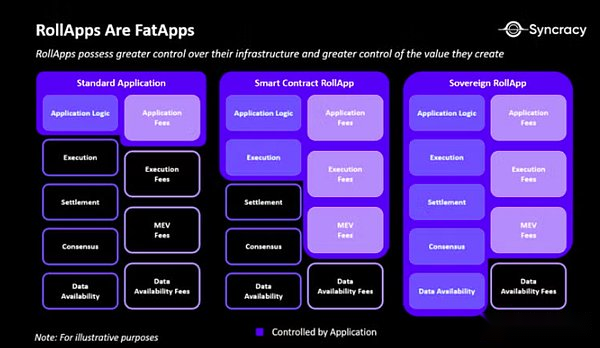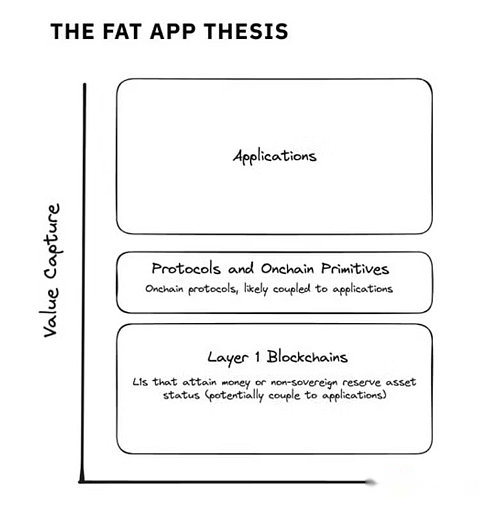
Author: Mason Nystrom, junior partner of Pantera Capital; compiled: 0xjs@Bitchain Vision
In last month’s Blockchain Letter, we introduced my Solana Breakpoint debate, in which I pointed out that every large enough app will eventually launch its own blockchain.This month, Uniswap, a large enough app, announced that it will launch Unichain—its own Ethereum L2 network.
Uniswap, originally a simple decentralized trading protocol that allows users to trade long-tail assets, has now grown into a behemoth of cryptocurrencies, covering multiple applications, multiple protocols, and now has its own chain.

Unichain’s launch has several important implications for cryptocurrencies, including:
– Unichain provides a new model for token value accumulation
– DeFi activity migrated from Ethereum mainnet
– Unichain consolidates fat application theory and the continuous commodification of block space
Let’s discuss it.
UNI rejuvenates and launches a new token value accumulation model
Historically, Uniswap’s token UNI has always served as a governance token, having control over Uniswap DAO and Uniswap protocol fee conversion, allowing exchange fees to be added and redirected to DAO’s vault.
According to the white paper, Unichain proposes to launch a decentralized sorter to manage transaction sorting on Unichain.As part of the decentralized sorter, the validator must stake UNI to sort the transactions and will receive a partial fee reward based on the value of the staked weighted token.This means that UNI tokens will change from a nearly useless governance token to a token with more direct value accumulation (such as sorter fees).More importantly, the demand for UNI tokens may increase because of the limited number of validators, and those with the highest UNI staked weight will verify the network and earn fees.
It is worth knowing that Uniswap made a tradeoff when launching Unichain.By turning to its own L2 blockchain, Uniswap sacrificed some composability with other parts of the Ethereum DeFi ecosystem in favor of gaining more control over its block space and improving protocols (and applications) that can captureeconomic benefits.By transferring liquidity and transactions to Unichain, the protocol can provide higher throughput and capture more overall economic value from its own chain through a sorter.When protocols such as Uniswap run on Ethereum, they can get fees from their applications.But with Unichain, UNI token holders can capture a portion of all economic activity—borrowing, non-Uniswap DEX (decentralized exchange) exchanges, stablecoin transfers—all of which happen on their chains becauseEach transaction is sorted by Unichain validators.

This has brought great profits to Coinbase and Base, with general-purpose Rollups such as Arbitrum and Optimism also earning millions of sorting fees.Now, Unichain will seek to capitalize on its influence as a DeFi giant to capture the wider trading economic activity that takes place within its block space.
As many other applications want to launch their own chains, Unichain has proposed a replicable model that readjusts the incentives for token holders and allows the protocol to capture more economic value related to the application chain.
Awkward conversation: Unichain and Ethereum main network
Unichain has a significant impact on the Ethereum mainnet.Today, even with the growth of L2s such as Arbitrum and Base, the Ethereum mainnet still occupies a large number of DeFi activity and tens of billions of mainnet assets (excluding stablecoins).Ethereum mainnet DeFi activity has the potential (and perhaps very likely) to migrate to Unichain as it provides incentives for UNI stakeholders, provides fees for LPs, and provides better pricing for exchange users.
More importantly, Unichain has decided to have Unichain validators stake their UNI on the Ethereum mainnet, rather than on Unichain, which may help strengthen Ethereum’s security value proposition.
Ultimately, Ethereum has made a directional decision to shift activity from the mainnet, in stark contrast to chains such as Solana, which aims to maximize Layer1.However, Ethereum’s biggest value proposition is the strength of its underlying assets, which still acts as a gas token for Layer2, including Unichain, and represents one of the most liquid assets in the industry, as well as collateral across DeFi protocolsKey tools.
Fat application theory emerges again: vertically until its own chain
Unichain’s introduction reinforces fat application theory – crypto applications will capture most of the value as they are able to verticalize other parts of the stack.
I believe this will be a continuing trend in modern crypto applications – once sufficient user size or block space requirements are obtained, it will be vertical.And Uniswap is not the only company moving in this direction.Human authentication network Worldcoin once accounted for 50% of Optimism’s mainnet activity, prompting them to launch their own application chains.Even on high-performance chains like Solana, oracle provider Python accounts for 20% of Solana’s transactions and decided to turn to its own SVM-L1.In other areas of consumer cryptocurrencies, top NFT projects with strong brands, such as Pudgy Penguins, have chosen to build their own chains.As CEO Luca Netz explains, controlling the block space is conducive to the accumulation of value for the Pudgy brand.
My current view of fat application theory is that we will see most of the value accumulated to the application layer of the stack, where control over user and order flow puts the application in a privileged position.These applications may be combined with on-chain protocols and primitives, how Uniswap-like applications take advantage of their on-chain DEX protocols, and soon Unichain.Ultimately, these protocols can still accumulate considerable value, but the application may gain more value given the app’s proximity to users and the off-chain components that provide the app with a more defensible moat.
 Finally, I still believe that Layer1 blockchain (e.g. Bitcoin, Ethereum, Solana) has a path to obtain significant value as a non-sovereign reserve asset, where the underlying assets (e.g. ETH) are due to their commodities (e.g. gas), capitalThe use of assets (such as income) is valuable and has value as a collateral asset with extremely liquidity in the respective DeFi ecosystems of L1.These monetary attributes constitute the largest share of the value of the L1 asset.
Finally, I still believe that Layer1 blockchain (e.g. Bitcoin, Ethereum, Solana) has a path to obtain significant value as a non-sovereign reserve asset, where the underlying assets (e.g. ETH) are due to their commodities (e.g. gas), capitalThe use of assets (such as income) is valuable and has value as a collateral asset with extremely liquidity in the respective DeFi ecosystems of L1.These monetary attributes constitute the largest share of the value of the L1 asset.
It is possible that if there is enough time, the application will try to build its own L1, just like building its own L2.However, building a commodity L2 block space is very different from starting L1 and converting tokens into commodities and collateral assets, so this could be a distant future discussion.
The key is that as more and more crypto applications launch their own block space to control liquidity, users and order flow, the crypto world will reevaluate the applications as people come to logical conclusions – fat applicationsIt’s coming soon.








